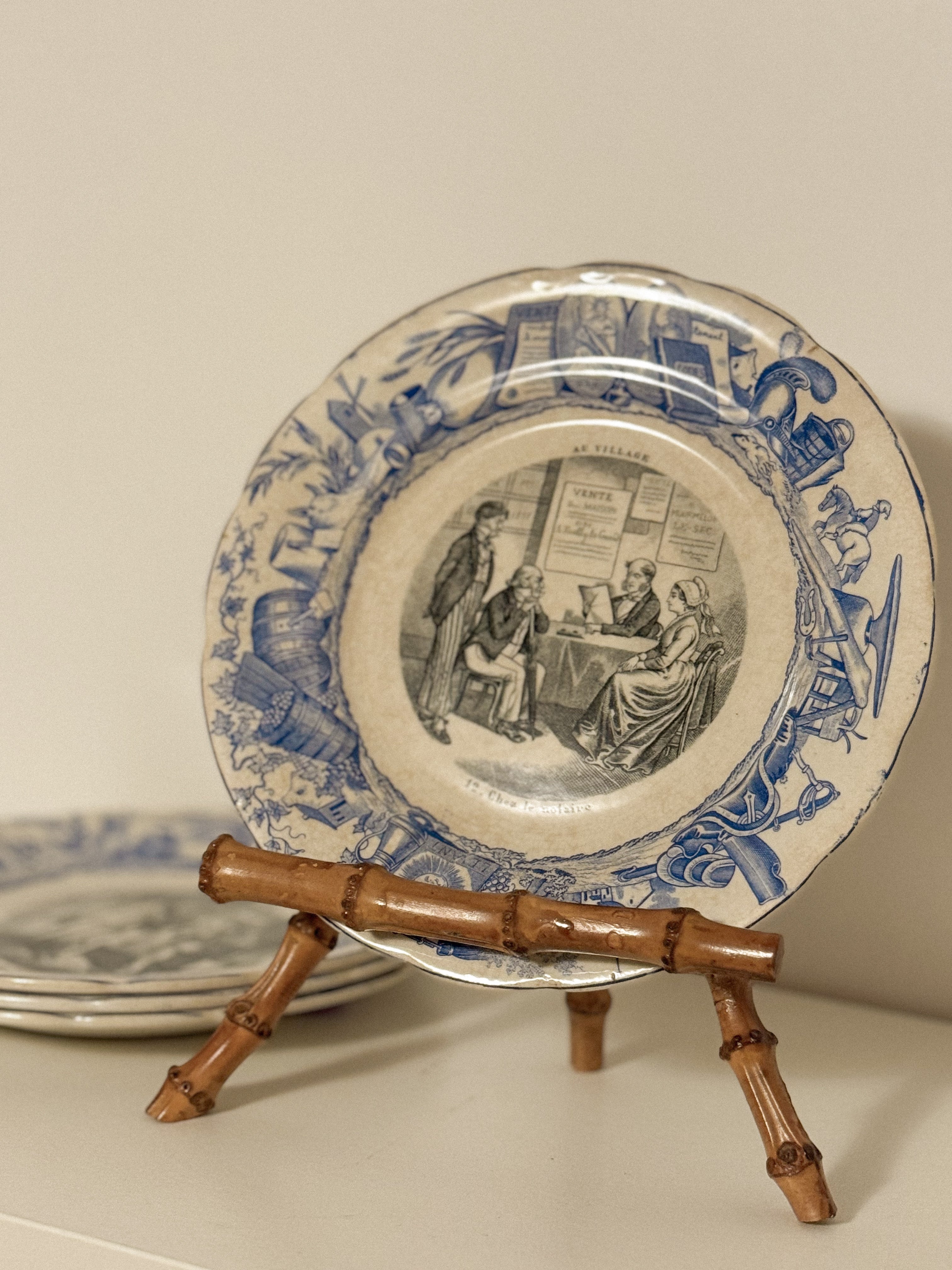
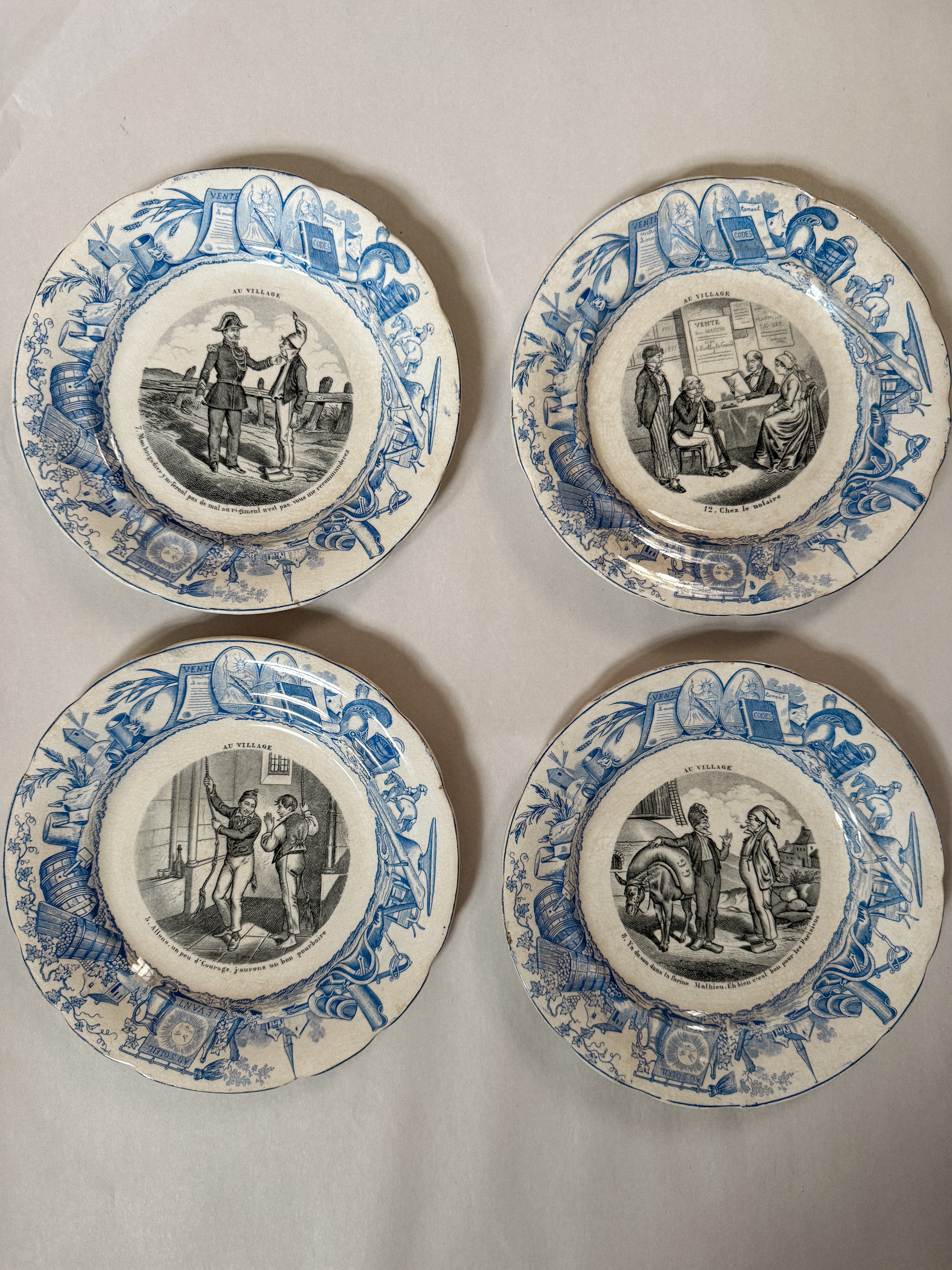
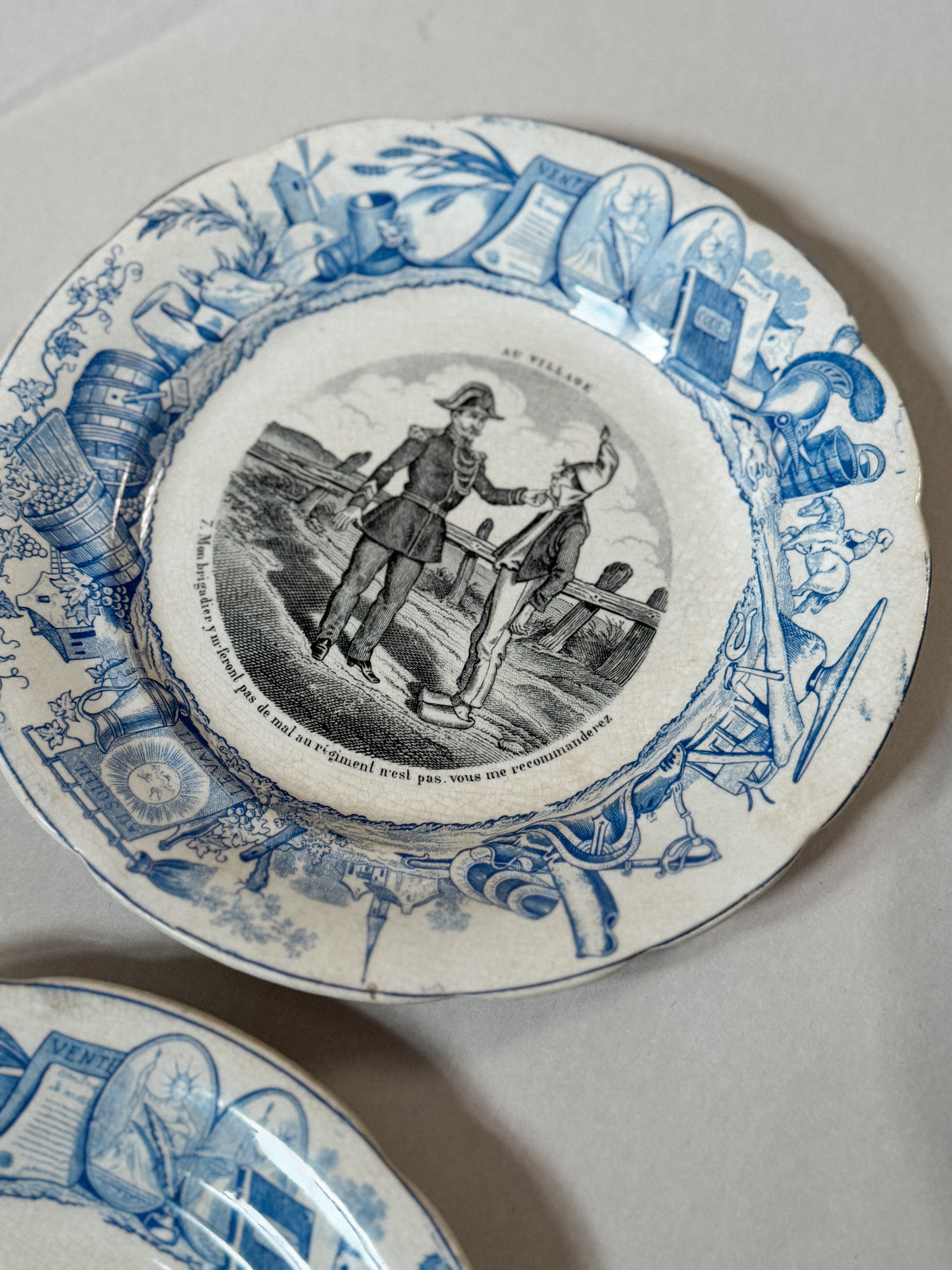
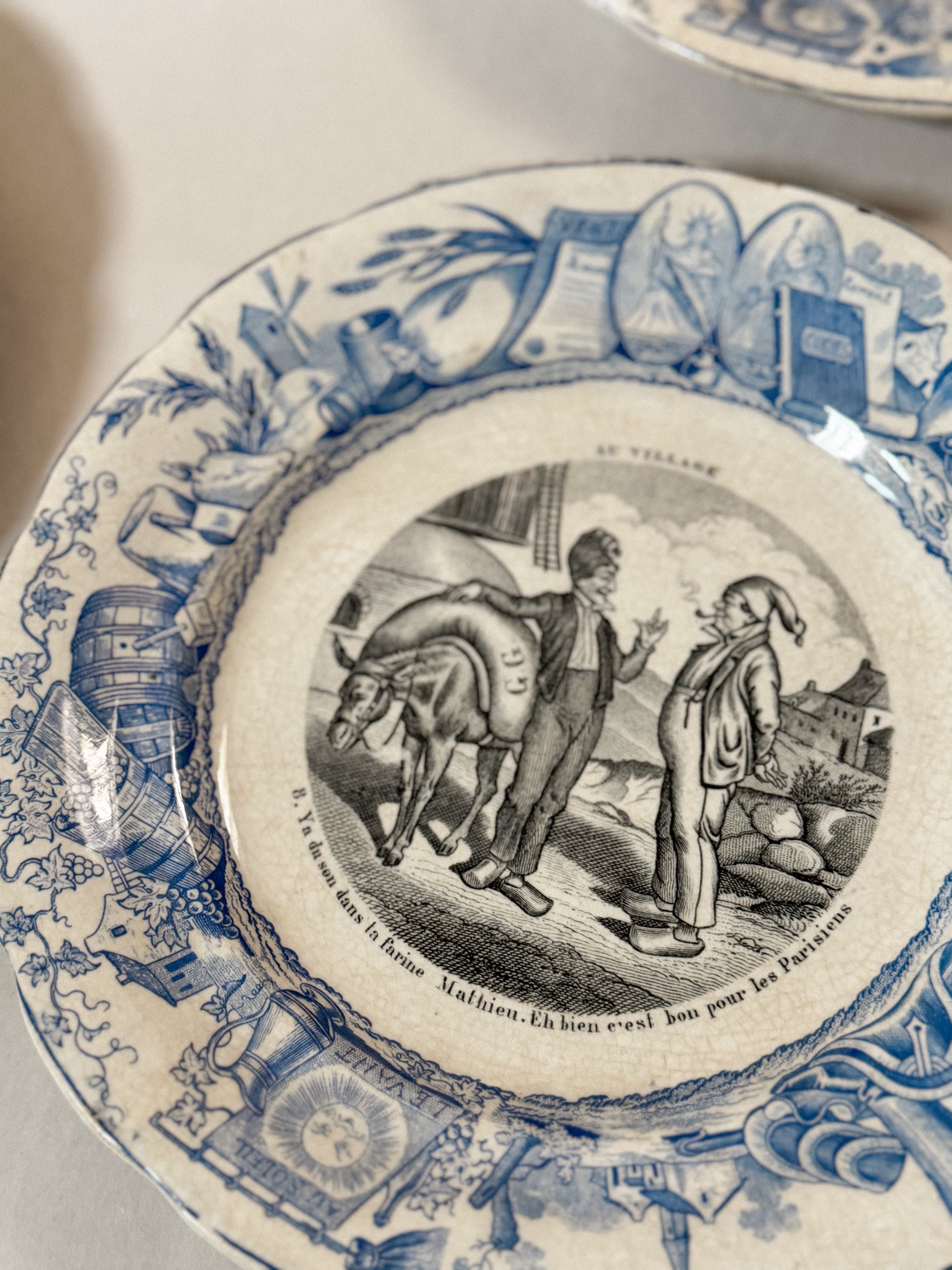
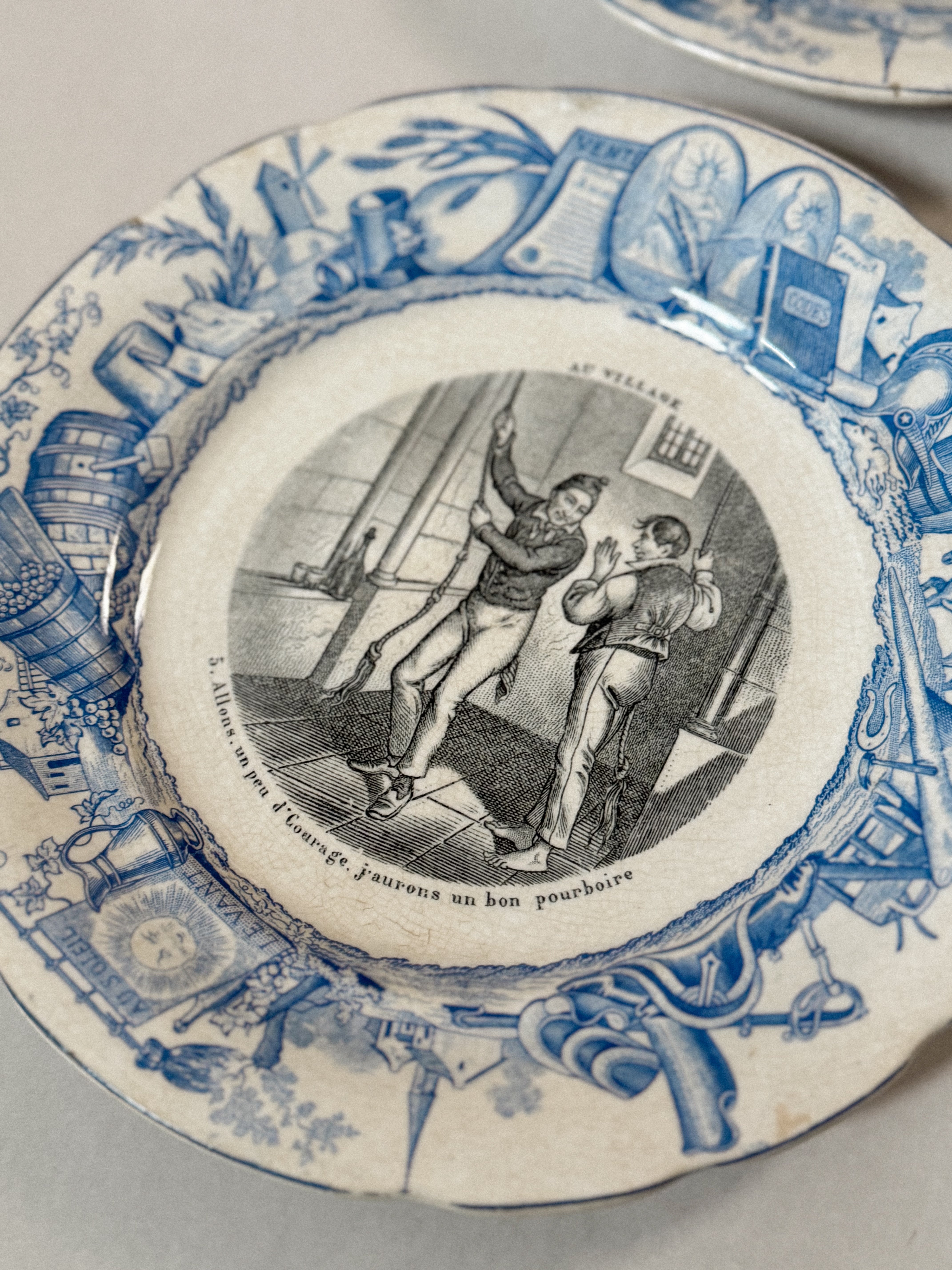
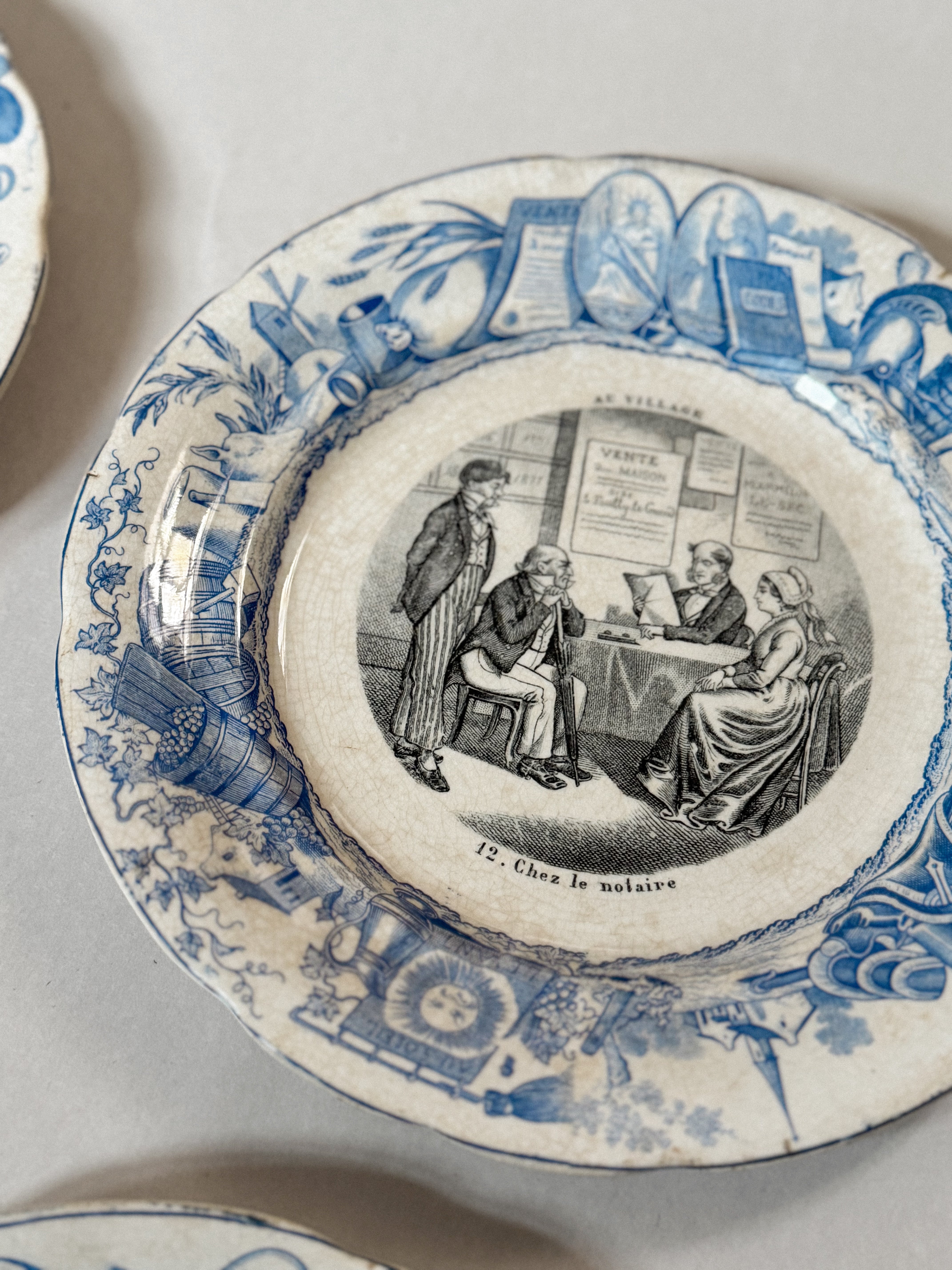
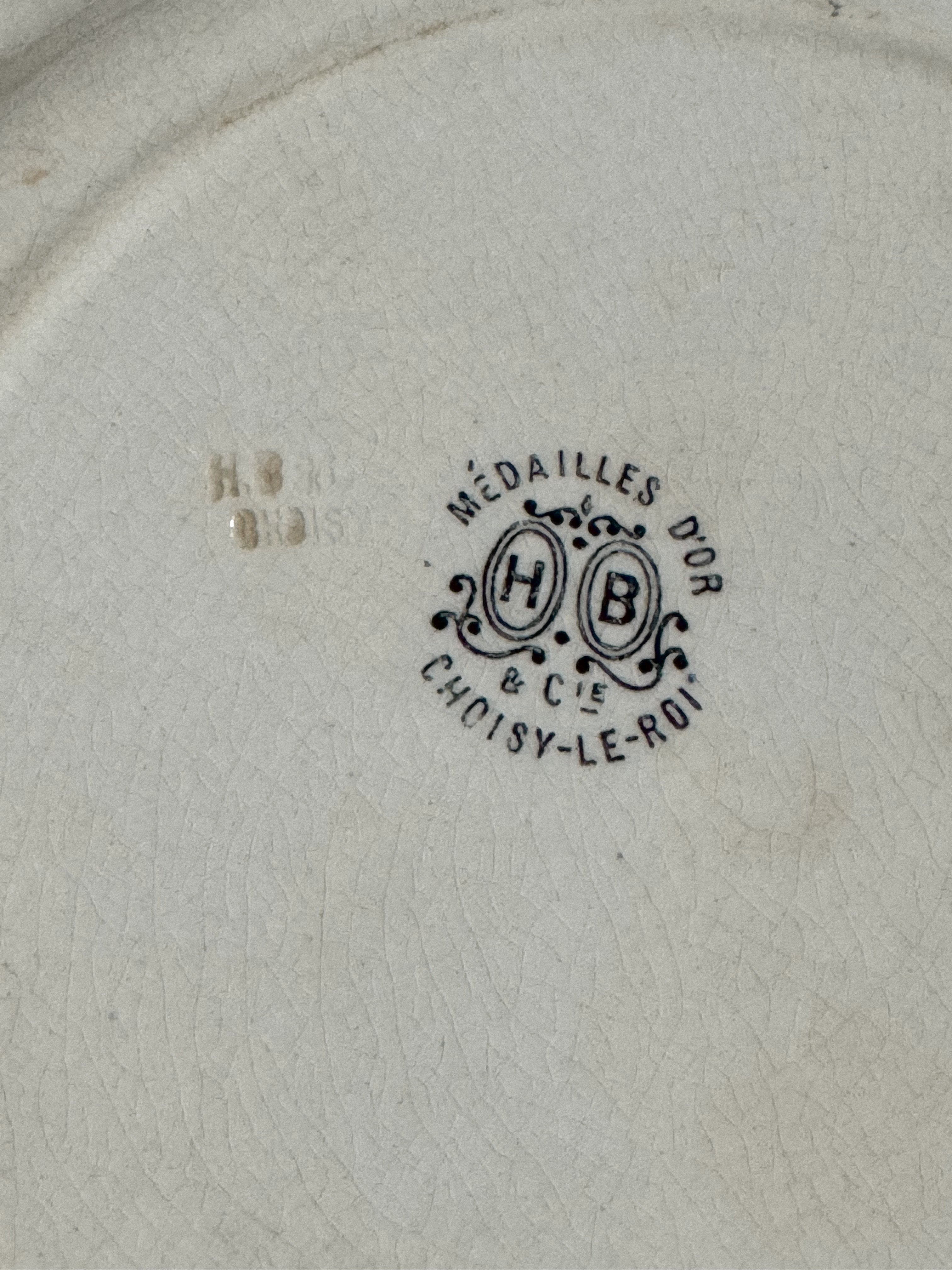
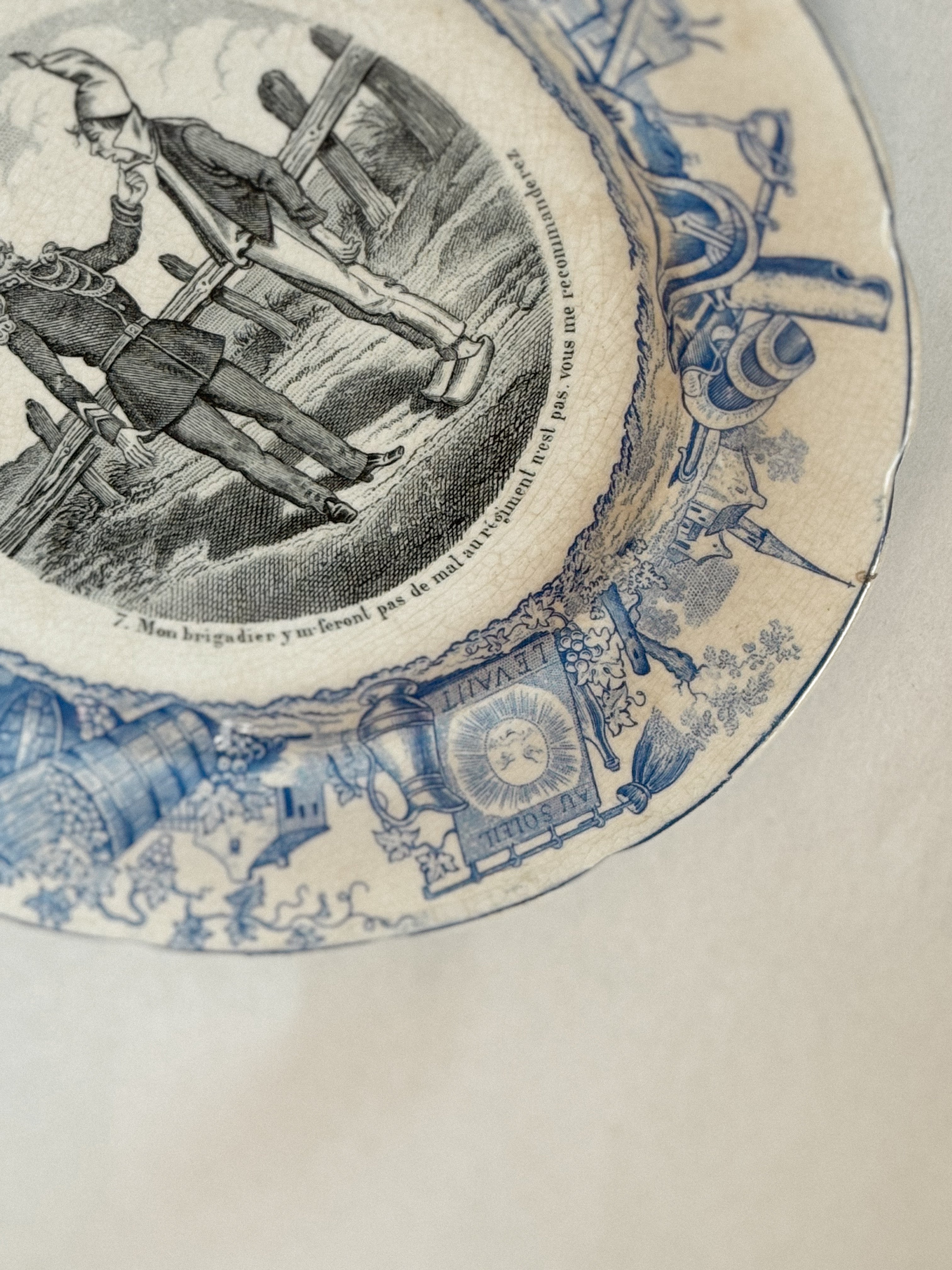
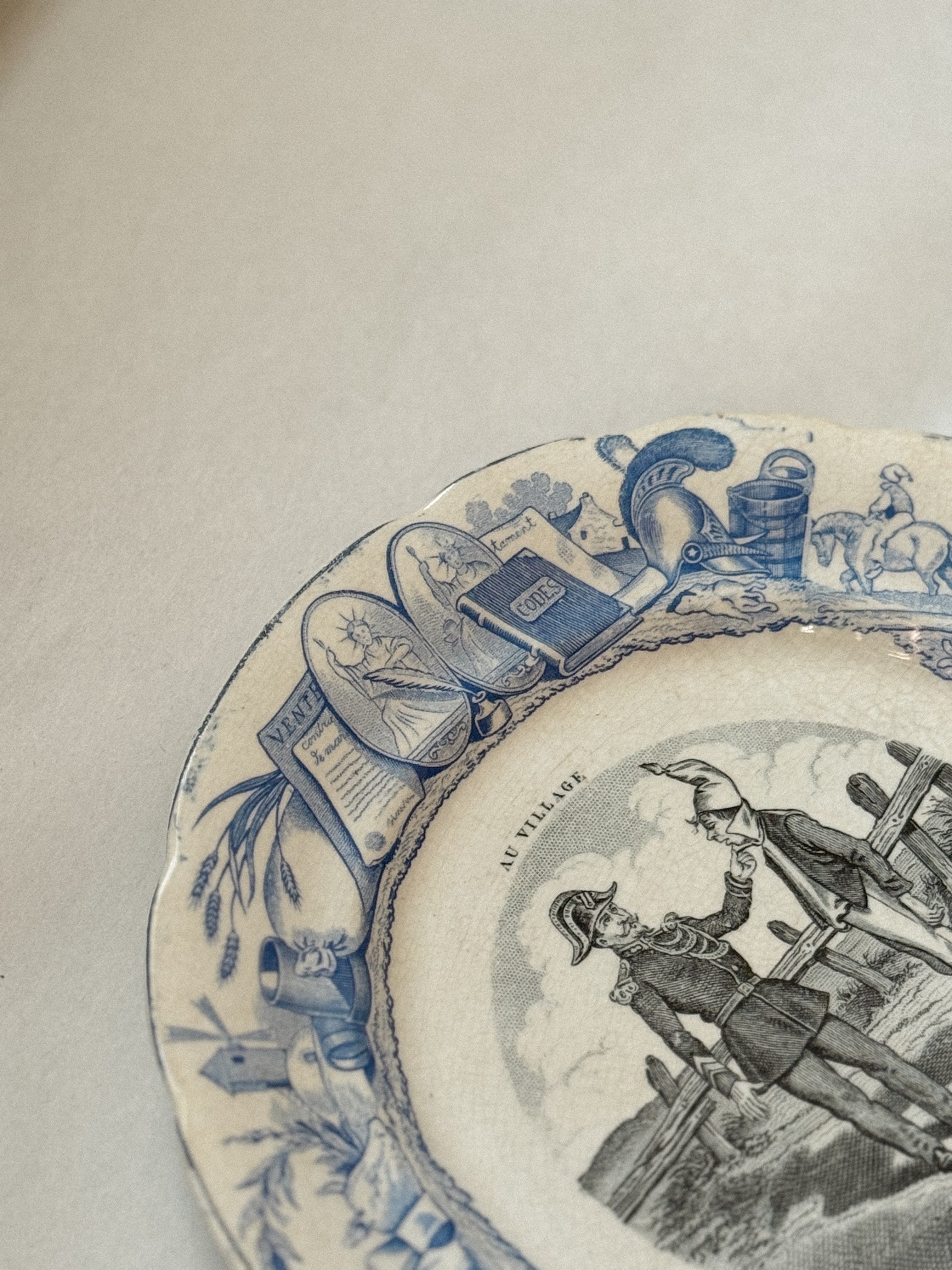
Plates by H. Boulenger & Cie, Choisy-le-Roi — c. 1840–1860
Four “Au Village” Plates by H. Boulenger & Cie, Choisy-le-Roi — c. 1840–1860
Choisy-le-Roi, France
H. Boulenger & Cie (Médailles d’Or)
c. 1840–1860
Creamware with blue underglaze transfer decoration
Diameter: 7 10⁄16 in (≈ 19.4 cm)
Each sold individually with bundle pricing: 10% off 2, 15% off 3, 20% off 4
Four 19th-century French faïence plates from the Au Village series by H. Boulenger & Cie, Choisy-le-Roi. Each plate depicts a different rural vignette from everyday village life, rendered in blue underglaze transfer on creamware. The series is known for its wit and charm—humorous scenes of landlords, millers, and notaries that offer a glimpse into 19th-century French country humor.
All four plates share the same intricately printed border of grapevines, tools, and law books, framing each central image within a softly blurred blue vignette. Marked H B & Cie / Médailles d’Or / Choisy-le-Roi on the reverse.
Choose your preferred scene from the dropdown below and recieve bundle discount when you purchse more than one.
Scenes available:
1. Mon propriétaire, je ne paierai pas ce mois-ci ; vous me recommanderez. — “My landlord, I won’t pay this month; you’ll recommend me.”
2. Y’a du son dans la farine — Mathieu ! Eh bien ! c’est bon pour les pigeons. — “There’s bran in the flour—well then, it’s good enough for the pigeons.”
3. Allons, un peu d’courage ; j’aurons un bon pourboire. — “Come on, a little courage—I’ll get a good tip.”
4. Chez le notaire. — “At the notary’s.”
Lovely displayed as a set on a kitchen or dining wall, or layered into an open shelf among creamware and ironstone. Their small size and printed humor make them perfect conversation pieces—each one a miniature story of 19th-century French life.
The Au Village series was produced by the Choisy-le-Roi manufactory under Hippolyte Boulenger, celebrated for narrative transferware that captured the wit of provincial France. The softly shaded blue framing around each scene was part of the original engraving—a hallmark of fine mid-century French transferware.
Choose options









